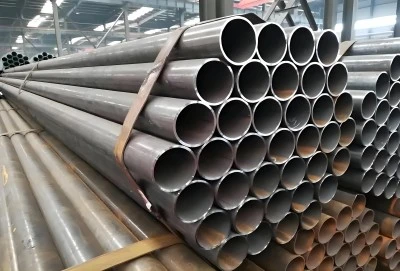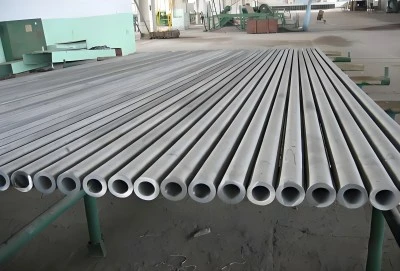In the world of steel tubing, ASTM A512 and ASTM A513 are two widely used specifications that often come up in discussions. While they may seem similar at first glance, these standards have distinct characteristics that set them apart. This article will delve into the key differences between ASTM A512 and A513 tubes, focusing on their material composition, manufacturing methods, and mechanical properties. By understanding these distinctions, you'll be better equipped to choose the right tubing for your specific application.
|
|
|
How do ASTM A512 and A513 Tubes differ in material composition?
The material composition is one of the primary factors that distinguish ASTM A512 and A513 tubes. Both specifications cover carbon and alloy steel tubing, but they have different requirements and ranges for chemical composition.
ASTM A512 tubes are typically made from carbon steel with a relatively simple composition. The standard specifies four grades: MT 1008, MT 1010, MT 1015, and MT 1020. These grades have varying carbon content, ranging from 0.10% to 0.23% maximum. The other alloying elements, such as manganese, phosphorus, and sulfur, are kept within tight limits to ensure consistent properties across different heats of steel.
On the other hand, ASTM A513 tubes offer a broader range of material options. This specification covers both carbon and alloy steel tubing, with over 30 different grades available. The carbon content in A513 tubes can range from as low as 0.06% in some grades to as high as 0.55% in others. Additionally, A513 allows for the inclusion of various alloying elements, such as chromium, nickel, and molybdenum, which can enhance specific properties like strength, corrosion resistance, or heat treatability.
For example, an ASTM A513 tube grade 4130 would contain chromium and molybdenum, making it suitable for applications requiring higher strength and hardenability. In contrast, an A512 MT 1010 tube would have a simpler composition, primarily consisting of iron and carbon, making it more suitable for general-purpose applications where extreme strength is not required.
The wider range of material options in ASTM A513 tubes allows for greater flexibility in meeting specific application requirements. However, this also means that more careful consideration is needed when selecting the appropriate grade for a given use case.
What are the differences in manufacturing methods between A512 and A513?
The manufacturing methods used to produce ASTM A512 and A513 tubes are another significant area of difference between these two specifications. These distinct production processes contribute to the unique characteristics and applications of each type of tubing.
ASTM A512 tubes are manufactured using a cold-drawn process. This method begins with a larger diameter tube that is drawn through a series of dies to reduce its size and achieve the desired dimensions. The cold-drawing process work-hardens the material, resulting in increased strength and improved surface finish. However, it also reduces the ductility of the tubing.
The cold-drawing process used for A512 tubes allows for tight control over the final dimensions, resulting in excellent straightness and concentricity. This makes A512 tubes particularly well-suited for applications requiring precise fits or where dimensional stability is crucial, such as in hydraulic and pneumatic cylinders, automotive components, and precision machinery.
In contrast, ASTM A513 tubes are typically produced using an electric resistance welding (ERW) process. This method starts with flat steel strip that is roll-formed into a tubular shape and then welded along the seam using electric current. After welding, the tube may undergo additional processing steps such as sizing, heat treatment, or cold working, depending on the specific grade and requirements.
The ERW process used for A513 tubes allows for more flexibility in terms of size ranges and wall thicknesses. It can produce tubes with larger diameters and thinner walls compared to the cold-drawn process. Additionally, the ERW process is generally more cost-effective for producing larger quantities of tubing.
One key advantage of ASTM A513 tubes is that they can be produced in both as-welded and cold-worked conditions. The as-welded condition offers good formability and weldability, making these tubes suitable for applications where further fabrication is required. Cold-worked A513 tubes, on the other hand, provide increased strength and improved surface finish, similar to A512 tubes.
It's worth noting that the welding process used in A513 tube production can create a heat-affected zone along the weld seam. While modern ERW techniques minimize this effect, it's still a consideration for certain critical applications where weld integrity is paramount.
How do A512 and A513 compare in terms of mechanical properties?
The mechanical properties of ASTM A512 and A513 tubes are influenced by their material composition and manufacturing methods, leading to some notable differences in their performance characteristics.
ASTM A512 tubes, being cold-drawn, generally exhibit higher tensile and yield strengths compared to as-welded A513 tubes of similar composition. The cold-drawing process work-hardens the material, increasing its strength but reducing its ductility. For example, an A512 MT 1020 tube might have a minimum tensile strength of 380 MPa (55,000 psi) and a minimum yield strength of 290 MPa (42,000 psi).
The increased strength of A512 tubes makes them suitable for applications requiring high load-bearing capacity or resistance to deformation under stress. However, the reduced ductility means they may be less suitable for applications involving significant bending or forming operations.
ASTM A513 tubes, on the other hand, offer a wider range of mechanical properties due to the variety of grades available and the option for post-weld processing. As-welded A513 tubes generally have lower strength but higher ductility compared to A512 tubes. This makes them more suitable for applications requiring good formability or where welding and further fabrication are needed.
For instance, an as-welded A513 Type 1 (1020) tube might have a tensile strength range of 380-550 MPa (55,000-80,000 psi) and a minimum yield strength of 205 MPa (30,000 psi). The higher ductility of these tubes allows for easier bending and forming operations, which can be advantageous in many fabrication processes.
However, it's important to note that A513 tubes can also be cold-worked after welding to increase their strength. In this case, their mechanical properties can approach or even exceed those of A512 tubes, depending on the degree of cold working applied.
Another key difference lies in the consistency of mechanical properties around the circumference of the tube. A512 tubes, being seamless and cold-drawn, tend to have more uniform properties throughout. A513 tubes, due to the presence of a weld seam, may have slightly different properties in the weld area compared to the base material, although modern welding techniques minimize these differences.
When it comes to fatigue resistance, A512 tubes often perform better due to their seamless nature and the strengthening effect of cold drawing. This makes them a preferred choice in applications involving cyclic loading or vibration.
It's worth mentioning that both A512 and A513 specifications provide minimum mechanical property requirements, but the actual properties can vary within and above these minimums. The specific grade, heat treatment, and amount of cold work all influence the final mechanical properties of the tubing.
Contact us
In conclusion, while both ASTM A512 and A513 tubes are widely used in various industries, they have distinct characteristics that make them suitable for different applications. A512 tubes, with their cold-drawn manufacturing process and higher strength, are ideal for precision applications and those requiring consistent mechanical properties. On the other hand, A513 tubes offer greater flexibility in terms of material composition and size ranges, making them suitable for a broader range of applications, especially where formability and weldability are important.
When choosing between ASTM A512 and A513 tubes, it's crucial to consider the specific requirements of your application, including dimensional accuracy, strength needs, formability, and cost considerations. By understanding the differences in material composition, manufacturing methods, and mechanical properties between these two specifications, you can make an informed decision that ensures optimal performance and longevity of your tubular components.
Are you in need of high-quality ASTM A513 tubes? Look no further than Longma. We offer a wide range of grades, including 1010, 1015, and 1020, with outer diameters ranging from 21.3mm to 406.4mm and thickness options from SCH10 to SCHXXS. Our stock quantity is always maintained at 100-200 tons, ensuring that we can meet your demands promptly. If you're interested in learning more about our A513 tube offerings or placing an order, feel free to contact us at info@longma-group.com. Let's build a successful partnership together.














